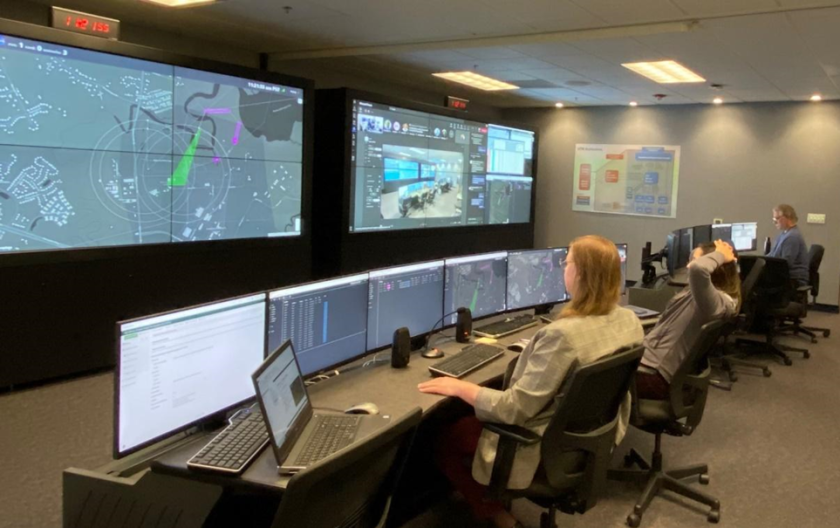NASA Langley Research Center’s Advanced Air Mobility (AAM) High Density Vertiplex (HDV) sub-project recently hosted a live flight test event for guests that successfully showcased scalable autonomous operations. As a NASA Langley partner, ANRA Technologies provided fusion capability for multiple surveillance sources integrated into ANRA’s Uncrewed Traffic Management (UTM) system, then visualized in the HDV Operations Center.
Since 2021, ANRA has collaborated with NASA Langley on technologies that enable beyond-visual line-of-sight (BVLOS) operations for uncrewed aircraft systems such as drones and vertical take-off and land (VTOL) aircraft. ANRA was tasked to fuse cooperative and non-cooperative surveillance sensor data into a correlated common operating picture. These systems include three NASA radars (LSTAR V2, (2) GA-9120) in addition to another Skyler-2 radar through a collaborative Space Act Agreement with Longbow LLC. Cooperative ADS-B and FLARM sensors are also included. Additionally, ANRA’s fused track data includes a path prediction feature that anticipates an aircraft’s route for additional deconfliction measures. The NASA-ANRA team continues to refine fusion features and user interfaces to ensure accurate and selectable information is presented meaningfully.
“We want to get to the point in the UAM ecosystem where people will be able to generate revenue while the average person can afford to use it,” said Lou Glaab, Acting Branch Head for the Aeronautic Systems Engineering Branch at NASA Langley. “To achieve that, you are talking high density with lots of traffic and aircraft. I’m sure some companies could fly VTOLs instead of helicopters, but that will only serve a very small percentage of the population.”
ANRA is also responsible for integrating its fused surveillance data stream into its UTM solution for reducing and mitigating air risk for BVLOS operations. Using the same system deployed for numerous FAA projects, ANRA’s UTM platform provides core services such as strategic deconfliction and conformance monitoring, geozone creation, and alerting for uncrewed aircraft. By adding surveillance, the ANRA solution routes uncrewed aircraft to avoid the risk of air collision with both crewed and uncrewed aircraft. ANRA’s platform also integrates other supplemental data (Remote ID, LAANC, weather, NOTAMs, etc.) to provide a single common operating picture that helps manage and coordinate all uncrewed air traffic from the Langley HDV Operations Center.
The ANRA capabilities installed in support of the HDV subproject are designed for scalability and have been architected using international standards that align with the Federal Aviation Administration’s (FAA) vision for integrating drones and VTOLs into the national airspace system. The High Density Vertiplex subproject will work toward developing a prototype vertiport automation system – a vertical aircraft takeoff and landing pad plus terminal – to assess scalable and efficient aircraft operations, flight and airspace management procedures, and interoperability of capabilities needed to support AAM operations, especially in an urban environment.
Glaab also stated, “We are performing rapid prototyping and assessment of a future UAM Ecosystem allowing a view of the future through integration of representative elements involved with onboard automation and automated airspace to develop a vertiport automation system. We have much more work ahead of us, but this simulation and flight test with subsequent demonstration proves that we took a big step forward for AAM.”
For more information visit:




